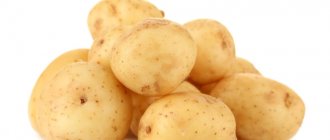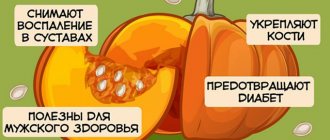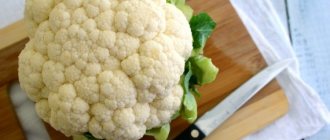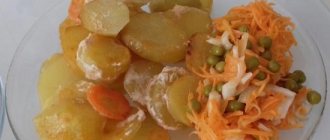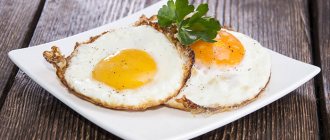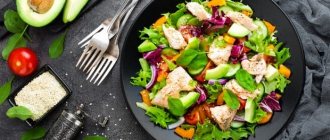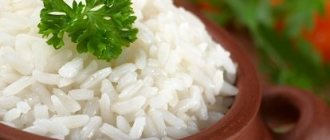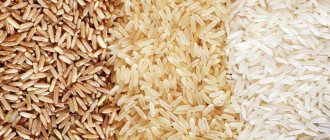Potatoes make up a significant part of the diet of residents of Russia and the CIS countries. Now that the problem of excess weight affects many, knowing how many calories are in different foods becomes necessary. The calorie content of potatoes depends on the method of their preparation. If prepared correctly, tubers will not only not spoil your figure, but will also help you lose weight.
Calorie content and nutritional value of potatoes
Potatoes are a fairly high-calorie product, as they have a high starch content. The energy value, usefulness of the vegetable and its calorie content vary depending on the cooking method. BJU indicators of the most popular root vegetable dishes:
| Product | Calorie content per 100 g of product | Squirrels | Fats | Carbohydrates |
| Raw potatoes | 81 kcal | 2.1 g | 0.41 g | 18.2 g |
| Boiled potatoes without peel | 83 kcal | 2.0 g | 0.42 g | 16.68 g |
| Potatoes fried in sunflower oil or lard | 193 kcal | 2.9 g | 9.5 g | 23.4 g |
| Stewed potatoes | 251 kcal | 6.6 g | 0.32 g | 71.6 g |
| Young potatoes | 60 kcal | 2.31 g | 0.4 g | 12.4 g |
| French fries | 504 kcal | 8.0 g | 26.11 g | 66.1 g |
| Chips | 522 kcal | 5.3 g | 30.1 g | 53.2 g |
| Jacket potatoes | 85 kcal | 2.38 g | 0.73 g | 15.89 g |
| Potatoes baked in the oven | 98.8 kcal | 4.89 g | 1.47 g | 13.6 g |
| Draniki | 130.8 kcal | 2.4 g | 6.1 g | 17.4 g |
| Potatoes fried in vegetable oil with onions and mushrooms | 144. 75 kcal | 2.08 g | 10.52 g | 11. 12 g |
| Potatoes boiled in water with salt | 127 kcal | 2.1 g | 0.45 g | 17 g |
Calorie content of one serving of potato dish is calculated taking into account its weight. An unpeeled medium-sized tuber weighs 192 g; after peeling, the vegetable loses 20 g of weight, and after cooking it gains a calorie content of 142.76 kcal.
The puree, which contains butter and milk, has a calorie content of 133 kcal. This indicator can be reduced if you prepare a dish with the addition of broth, without butter and with a minimum amount of milk. Thus, the calorie content of crushed potatoes without fat additives will be 126 kcal per 100 grams of product.
Calories in potatoes of different varieties
Different varieties of potatoes contain different amounts of starch, and therefore calories. Of the traditional potato varieties, the “Dobro” variety is richest in carbohydrates; the “Volzhanin” and “Polet” varieties contain less of them. Accordingly, the “Dobro” variety has the highest calorie content of potatoes.
The calories in potatoes accumulate gradually over the summer. Starch accumulates in large quantities by autumn. Because of this, the calorie content of new potatoes is lower. At the beginning and middle of summer, you can eat potatoes without fear of gaining weight. In 100 grams of such potatoes there are only 12 grams of carbohydrates. The calorie content of young potatoes is about 60 kilocalories.
Beneficial features
Potatoes belong to the category of dietary products, which have a beneficial effect on the gastrointestinal tract. It is advisable to include it in the diet for digestive disorders, gastritis, etc.
Raw potato juice helps with heartburn, eliminates nausea, relieves headaches, and helps relieve inflammation in stomach ulcers.
With the help of potassium, which is part of potato pulp, normal heart function is ensured. The product has diuretic properties and helps cope with edema in renal failure.
Thanks to ascorbic acid, the product removes toxins from the body, improves immunity and is used as a general tonic. Despite the fact that there is less vitamin C in potatoes than in apples, citrus fruits, bell peppers and currants, it is included in the diet much more often than fortified foods. It is worth considering that mature root vegetables, which have been stored in the cellar for a long time, lose some of their beneficial substances, including vitamin C.
Potato dishes are absorbed quite well by the body. Starch prevents vascular sclerosis, helps cope with liver diseases and gall bladder problems.
Juice from root vegetables is used to treat sore throats with pharyngitis, laryngitis, sore throat, etc. Jacket potatoes are used to make cakes for wrapping for pneumonia and are used for inhalation to treat colds.
Glycemic index of the product
What is the glycemic index and why is it important for some people to monitor it? GI is an indicator that determines the effect of carbohydrates in food on changes in human blood sugar levels. Foods with a high GI are processed faster, turning into fats, and harm the body. They disrupt metabolism. Vegetables and fruits (especially green ones) have a low GI, a lot of fiber, take a long time to digest and provide energy.
It is customary to divide foods into three categories (depending on their glycemic index):
- low (from 0 to 55);
- average (from 56 to 69);
- high (from 70 and above).
It is believed that the most useful of them when consumed are those with a GI of less than 35 units.
The glycemic index of potatoes is as much as 70 units. That's a lot. Therefore, people with diabetes should limit their consumption of second bread. Even healthy people should not eat potatoes often. And with heat treatment, the GI of potatoes increases. There are 80 units of it in chips, and 90 units in purees.
The glycemic index of purees is higher than that of chips
Now breeders have created new varieties with a 30% lower starch content and, accordingly, a lower GI. In varieties with purple skin, this indicator is lower, and with proper preparation (cooking in the skin), you can eat the vegetable a couple of times a week in small portions.
How to Make Healthy French Fries Without Oil
Despite this, you don’t need to give up potatoes completely. It has a lot of useful substances that have a positive effect on health.
Harm and contraindications
In some cases, potatoes can be harmful to health. The main danger of the vegetable is the accumulation of corned beef. The substance is toxic and can cause severe intoxication of the body. The reason for this phenomenon is considered to be the prolonged exposure of potatoes to light. This usually happens if you store vegetables in an uncovered area for three months.
The release and increase in the amount of teratogen is indicated by the appearance of sprouts and greening of sprouted tubers. Signs of poisoning when eating old, low-quality potatoes are:
- dizziness;
- stool disorder;
- nausea accompanied by vomiting;
- a short-term fall into unconsciousness;
- general malaise;
- the occurrence of shortness of breath;
- convulsions.
Pregnant women should be especially careful when consuming potato dishes, as solanine can cause the development of birth defects in the fetus.
When using green potatoes, you need to completely peel off any areas of the pulp along with the skin, although it is best not to eat spoiled tubers.
Relative contraindications to eating potatoes are:
- being overweight;
- diabetes.
Due to its starch content, this product has the ability to increase blood glucose levels.
Fried potatoes and french fries are prohibited for people with functional disorders of the digestive system, suffering from liver and kidney diseases.
Benefits of boiled potatoes
Tubers contain a large amount of potassium, which is necessary for the human body to maintain the health of the cardiovascular system, maintain proper kidney function and remove excess fluid. Considering that the calorie content of potatoes when properly prepared is relatively low, they can be consumed regularly as the main source of this element.
For diseases of the gastrointestinal tract, mashed potatoes are recommended as the safest source of fiber for the mucous membrane. Also, the enveloping properties that crumpled boiled potatoes have accelerate the healing of minor injuries to the gastrointestinal mucosa.
The high concentration of starchy substances in the vegetable helps get rid of bad cholesterol, which is necessary when losing weight. After cooking, potato starches become easily digestible, therefore they perform a cleansing function more effectively.
Tubers in their uniforms do not lose the high concentration of iodine they contain during cooking. To maintain the health of the thyroid gland, it is enough to consume 200 g of potatoes per day in order not to encounter iodine deficiency. The low calorie content of boiled potatoes, even with thyroid diseases, does not contribute to weight gain.
If you add only vegetable oil to a boiled vegetable, then it can also be eaten if you have hormonal diseases that cause obesity. Potatoes give you a long-lasting feeling of fullness due to their high fiber content. At the same time, due to the presence of starch, it does not have an aggressive effect on the mucous membrane, therefore, even if you bite a fresh tuber, the raw fiber will not harm the digestive system.
Varieties of potato diets
The strictest potato diet involves eating only baked potatoes. Moreover, the quantity is strictly definite. Two kilograms of potatoes are baked in the oven. Then divided into six servings. It is advisable that there are six separate potatoes. The diet allows you to lose one kilogram per day. If followed, a mandatory element is plenty of fluid intake and a complex of vitamins.
The duration of the diet is no more than five days.
The second type of diet involves adding milk, butter and vegetables to the diet. The duration of the diet should not exceed a week, and the menu should approximately correspond to the following order:
- First meal: two hundred grams of low-fat kefir;
- Second method: mashed potatoes without additives;
- Salad of fresh vegetables (excluding tomatoes) and 250 grams of boiled potatoes.
What to eat potatoes with to avoid gaining weight
To avoid gaining weight, eat potatoes with herbs and vegetables (except tomatoes). The duet with celery root salad goes well.
Using 1 egg and 10 g of butter, you can prepare potato cutlets. Puree the ingredients, add salt, shape the mixture into an oval shape and bake in the oven.
It is recommended to add a spoonful of horseradish to regular mashed potatoes. It speeds up metabolism and stimulates the digestion process.
What you should absolutely not eat potatoes with
It is important to separate proteins and carbohydrates, so it is not recommended to eat potatoes with meat and fish. This combination slows down the digestive system, causes fermentation of carbohydrates, a feeling of discomfort and heaviness in the stomach.
If you are watching your figure, you should not eat potatoes with butter, lard, tomatoes and bread.
Basic principles of losing weight with potatoes
There are several types of potato diets, but they all have the same rules:
- The mono-diet involves using potatoes only in their pure form. Any spices, salt and sauces are strictly prohibited;
- Young potatoes are better for weight loss. Therefore, this type of diet is best done in the summer;
- Throughout your weight loss, you need to drink at least two liters of water per day. In some cases, fluid volume can be added through tea or herbal infusions. But adding honey or sugar to them is not allowed;
- The addition of greens or cabbage is allowed in small quantities.
Advantages and disadvantages of the potato diet
The main feature of using potatoes for weight loss is the high nutritional value of the product:
- The overall effect on the body is positive;
- Does not cause apathy or depression;
- Helps improve performance and does not cause drowsiness;
- Is an affordable product;
- Offers a wide variety of dishes.
The potato diet is one of the varieties of strict mono-diets; while following it, it is important to support the body with a complex of vitamins. Losing weight is accompanied by some unpleasant nuances:
- The potato diet is strictly contraindicated during pregnancy and breastfeeding;
- During weight loss, a person experiences severe thirst;
- The root vegetable is prepared in its pure form, without any additions.
Calorie content of boiled potatoes
Boiled potatoes:
- without dressing – 80 kcal;
- with butter – 127 kcal;
- with vegetable oil and garlic – 124.7 kcal;
- with cracklings (pieces of melted lard) – 171.3 kcal.
Potatoes boiled in milk – 97.2 kcal.
Boiled potatoes with mushrooms – 102 kcal.
Mashed potatoes:
- with milk and butter – 133 kcal;
- with vegetable oil – 121 kcal;
- with vegetable oil and raw egg – 128 kcal.
Dumplings with potatoes – 110 kcal.
Fried potato:
- with vegetable oil – 203.8 kcal;
- with pork lard – 212 kcal
- on melted fat (lard) – 224.5 kcal.
French fries – 350 kcal.
For baking in their skins, it is better to choose medium-sized potatoes, otherwise there is a chance that the tuber will not bake in the middle, but will already burn at the edges. In order to save time, you should give preference to small fruits - they cook much faster.
Thanks to the peel, potatoes cooked in their jackets retain mineral salts and organic acids. It is rich in potassium and magnesium, ideal for diet.
Three hundred grams of boiled product contains the daily requirement of carbohydrates, potassium and phosphorus. But if you store it for more than three months, the properties of the nutrients in it decrease. The content of vitamin C especially decreases - only a third of the original amount remains.
Potatoes must be supplemented with protein-rich foods. This vegetable goes perfectly with meat or mushrooms, and the protein content in such dishes increases.
If you fry potatoes with mushrooms, the calorie content of the dish will not exceed 120 kilocalories per 100 g. It should be remembered: adding a large amount of oil significantly increases the calorie content of the dish.
Potatoes with mushrooms go well with sour cream. When baking such a dish with sour cream 30% fat, only 100 kilocalories per 100 g. When using sour cream with less fat, the total calorie content of the dish is reduced. This is a very tasty and healthy way to cook potatoes.
Meat and potatoes in the oven is a great recipe for the holiday table. And in one hundred grams there are only 100 kilocalories. Using fatty meat increases the calorie content of such pots. For those who want to lose weight or just keep in shape, it is better to give preference to lean beef or pork.
Due to their low calorie content, potatoes are dietary. There are a huge number of low-calorie recipes with this vegetable: casseroles, pots, stews, baked or simply boiled potatoes. Potatoes combined with meat are a source of energy for the whole day.
But you should not overuse dishes made from this vegetable, because they are rich in carbohydrates. People who care about their figure should give preference to protein products for dinner - meat, fish, eggs. And potatoes can act as a side dish at lunchtime. The glycemic index of this product is high, so people with diabetes and pancreatic disease need to be extremely careful.
Potatoes are a perennial root crop of the nightshade family; all above-ground parts of the plant, especially the berries, are poisonous due to the high content of the toxic glycoside solanine.
The combination of unpretentiousness in cultivation and the satiety of dishes prepared from it made potatoes accessible to all segments of the population. Lost harvests due to late blight caused widespread famine in Ireland in the 19th century.
At the end of the 17th century, Peter the Great sent root crops from Holland to Russia for planting and cultivation in Russian provinces. The idea of growing earthen apples did not catch on right away; many, out of ignorance, poisoned themselves with the fruits of the plant and dubbed them devilish, and even rebelled against them.
Chemical composition, microelements and vitamins in potatoes
Potatoes are a storehouse of useful substances for the human body. It is used not only in cooking, but also in medicine and cosmetology.
Potatoes contain:
- amino acids;
- vitamins (B, B2, B6, C, PP, K, E);
- protein, iodine, iron;
- calcium, magnesium, zinc;
- minerals and folic acid;
- starch, carotene.
Beneficial properties for the body
The beneficial properties of the root vegetable include:
- removing excess water from the body, preventing swelling;
- salt breakdown;
- normalization of metabolism and acidity levels in the stomach;
- prevention of heart and vascular diseases due to the high potassium content;
- lowering blood cholesterol levels;
- smoothing of fine expression wrinkles due to the presence of folic and ascorbic acid in young tubers.
Compound
The beneficial properties of potatoes can hardly be overestimated; they are rich in vitamins and nutrients.
The most useful elements are preserved in potatoes that are boiled “in their jackets” or baked. However, it should be remembered that potato skins contain solanine, so the “skin” is not used for food consumption.
Thanks to potatoes, they support many processes in the human body:
- B vitamins ensure normal metabolism;
- Nicotinic acid forms useful enzymes;
- Beta keratin supports vision;
- Potassium optimizes heart function;
- Magnesium gives us a good mood;
- Calcium is essential for teeth and bones;
- Phosphorus improves brain function;
- Iron supplies the body with oxygen;
- Iodine regulates the activity of the nervous and endocrine systems;
- Copper gives the skin a velvety tint and supports the immune system of the whole body;
- Microelements are part of cells and ensure the functioning of the whole organism;
- Macroelements regulate and optimize the functioning of all systems;
- Minerals are involved in all life processes.
Juice, application
How to do it?
Juice can be prepared in two ways:
- Grate the vegetable and squeeze out the juice using gauze.
- Peel the potatoes and place in a juicer.
Healthy and tasty juice is obtained from red potato tubers.
How to use?
The juice should be drunk on an empty stomach, about half an hour before meals. To improve the taste and medicinal properties of the drink, you can add juice from carrots, pumpkin, celery, lemon, and also use cinnamon and honey. Due to the increased content of acid and starch, you should rinse your mouth after drinking the drink.
Taking juice for medicinal purposes differs in dosage:
- Stomach ulcer. The juice is taken 3 times a day, 2 hours before meals, 50 ml for 1 month.
- Gastritis. 150 ml of liquid per day for 10 days. After 2 weeks, repeat the course.
- Pancreatitis. Drink the drink for 10 days, 200 ml once a day, an hour and a half before meals.
How to cook potatoes correctly
Boiled potatoes (the calorie content of the dish can be adjusted by the composition of the ingredients) is prepared easily and quickly. However, to obtain tasty and healthy food, you should always take into account the nuances of heat treatment of potatoes, as well as the advice of experienced chefs.
For example:
- You need to cook vegetables in an enamel pan: this coating prevents the oxidation process. The lid should be tight-fitting and opaque, as light provokes the decomposition of vitamins;
- We must not forget that potatoes contain water-soluble nutritional components, so in order not to lose healthy juices, proteins and vitamins, you should fill the tubers with a small amount of water;
- To prepare jacket potatoes, the product must be washed thoroughly. If the tubers are boiled in their skins, they must be removed with a sharp knife, cutting off a layer of up to 2 mm. Don’t forget to destroy all the eyes;
- It is undesirable to keep peeled tubers in cold liquid for a long time - the product will lose its individual taste;
- New potatoes require slightly different handling. The thin skin can be removed very easily using the “old-fashioned” technique. Put on kitchen rubber gloves. Pour coarse salt into a bag and place small tubers. Rub them with the salty mixture, then alternately place them in a bowl of hot and cold water for a few seconds;
- For boiling, peeled fruits must be placed in boiling filtered water. If you pour cold liquid over the vegetables, the top layer will be ready the fastest, while the inside of the fruit will remain raw. Reduce heat treatment time by 5 minutes. A piece of butter thrown into the water will help;
- to prevent the peel from bursting on the tubers during cooking, they need to be pricked with a fork;
- the potatoes will not boil if you drain a little hot water and add cold liquid;
- tubers, divided into parts, will remain white when vinegar (6%) is added at the rate of 1 tbsp. l. for 1 liter of water;
- Cooking time depends on the crop variety and fruit size. To obtain a crumbly dish, cook the tubers for 15 minutes. from the moment it begins to boil over low heat in a tightly closed container.
When all the subtleties and culinary nuances of obtaining tasty and healthy boiled potatoes are known, you can test the acquired knowledge in practice.
To prepare the dish you will need:
- butter - 20 g;
- potatoes - 500 g;
- salt - ½ tsp;
- drinking water - 300 ml;
- dill.
Cooking method:
- Peel the tubers, rinse, cut into quarters.
- Heat filtered water to a boil, add salt, and add the separated tubers.
- Throw in a piece of butter, after the start of a new boil, reduce the height of the flame, close the container.
- Cook the product until soft, then drain the liquid.
- Leave the dish with the finished potatoes over medium heat so that any remaining moisture evaporates and the tubers dry well.
Serve the dish hot. Scatter pieces of fresh butter over it, sprinkle generously with chopped dill.
Step-by-step instructions: how to treat?
Radiculitis
If you have radiculitis, an effective way to treat it is to use raw potatoes. Grate the tubers of the product on a coarse grater, place on gauze and apply to the affected area. In addition, boiled potatoes are also used.
- The tubers must be boiled and crushed in advance, adding a few tablespoons of baking soda.
- The mixture is laid out on the surface of the gauze and pressed against the diseased area of the body.
Bruises
Do raw potatoes help with bruises or not? How to make a bandage?
- Grate the potatoes.
- Squeeze out the juice and place on cheesecloth.
- Apply to the bruise and secure with a bandage.
- After a few hours, change the bandage.
Wounds
For wounds, raw potatoes are grated and placed on the surface of a gauze napkin. The potato dressing is changed every 30 minutes. The method helps relieve the inflammatory process, reduce pain and prevent the occurrence of new formations.
Heartburn
To combat heartburn, you need to take raw potato juice for 10 days. The drink is consumed in the morning on an empty stomach in a dosage of 150 - 200 ml.
Haemorrhoids
There are several ways to use potatoes to treat hemorrhoids:
- In the form of a potato candle:
- It is necessary to cut a candle of a streamlined shape from fresh potatoes that does not have sharp edges.
- Rinse thoroughly beforehand.
- Afterwards, a potato tampon is inserted into the anus overnight.
- Potato porridge:
- The vegetable is grated.
- The mixture is placed in a gauze bag and applied to a knot or lump.
From insect bites
Using raw potatoes helps relieve inflammation and itching. It is necessary to apply several pieces of the washed, purified product to the site of the insect bite.
The potato tubers themselves have a lot of positive properties, however, to obtain them and eliminate side effects, you must adhere to the rules for preparing a particular medicinal tincture.
Let's talk about calories
Boiled potatoes: counting calories
How many calories are in boiled potatoes? You will be surprised! Per 100 grams of product - no more than 70 kcal. However, the number of calories directly depends on the method of cooking and serving the dish. For example, cooked with sour cream, fried onions or butter, the root vegetable increases the calorie content significantly.
How many calories are in boiled potatoes per 100 grams of product, prepared in various ways, is indicated in the following list:
- boiled in the skin (“country style” or in its uniform) - 77 kcal;
- boiled without peel - 80 kcal;
- boiled with butter - 127 kcal;
- boiled with onions fried in vegetable oil - 125 kcal;
- crushed with hot milk - 97 kcal;
- boiled, crushed with mushrooms - 102 kcal.
Mashed potatoes with pieces of lard are very high in calories. It reaches 171 kcal. For dumplings with potatoes, the energy value of the dough is added. Oven-baked potatoes (in their jackets) - 98 kcal.
Mashed potatoes
One of the most popular dishes on the European table is mashed potatoes. It comes from France, a country of gourmets and true connoisseurs of taste. Each of us has known the delicate structure and delicious aroma of mashed potatoes since childhood. A big plus for those food lovers who are at the same time trying to lose weight is that the energy value of mashed potatoes is not much higher than the calorie content of their boiled counterpart.
If you prepare this dish according to the traditional recipe with butter and milk, then there will be no more than 133 calories per 100 grams of product. It’s easy to guess that reducing calories means eliminating one of the additional components. Or you can do both at once!
An option to reduce the calorie content of mashed potatoes is to make it with a raw chicken egg instead of milk and vegetable oil instead of butter. Then the figure will be 128 kcal. per 100 grams of product.
Perfect puree: video recipe
Fried potato
One has only to remember the sizzling frying pan with potatoes, and thoughts about the dangers of fatty foods and the calorie content of such a dish begin to fade and recede. How many calories are in fried potatoes depends on the way it is prepared and the ingredients of the dish. Thus, food cooked in oil (with the exception of fries and chips) has significantly fewer calories than the same dish cooked in lard.
- fried in vegetable oil - 204 kcal;
- calorie content of fried potatoes with lard - 212 kcal;
- Favorite among fast food lovers, French fries and chips from McDonald's or Little Potatoes have an exorbitant amount of calories - over 316 units!
Despite the last figure, people are simply crazy about these unhealthy and high-calorie dishes. Nutritionists will not change their opinion that fatty foods and chips will never become healthy and promoted. If you want to eat healthy and take care of your health, then remember how many calories are in fried potatoes, french fries and chips, and give up these foods.
Homemade chips in the microwave: video
New potatoes
Scientists have found that calories tend to accumulate in vegetables as they are stored. So, 100 grams of product in young potatoes contains:
- raw - 61 kcal;
- boiled or baked - 66 kcal;
- in a dish with butter and herbs - 84 kcal.
The calorie content of fried potatoes, even young ones, is much higher! Boiled or baked potatoes can serve as a dish for the diet of a person who is losing weight, but fried foods should be completely avoided.
Doctors recommend eating the young root vegetable for those who have problems with the heart and blood vessels. It contains a huge amount of vitamin C and the main mineral that strengthens the walls of blood vessels - potassium.
